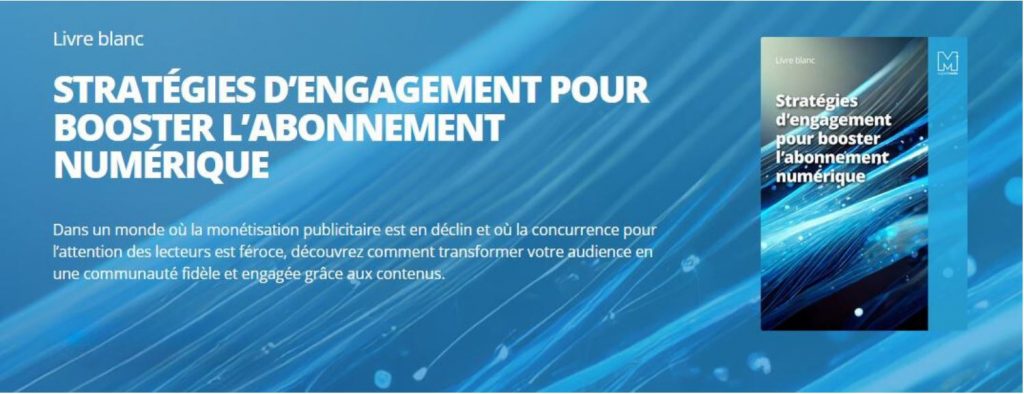Forget Robojournalism for a minute. What if AI’s real significance was its ability to boost engagement, wooing ‘news avoiders’ while letting us focus on subscriptions?
You are reading the Upgrade Media newsletter sent on 23st may 2024. Sign up now to receive future newsletters directly to your inbox or via LinkedIn.
Ok, if we’re going to be honest IA is already being used in your newsroom whether you know it or not, and the fact that it is creeping in without control or oversight poses potential problems. Which is why at Upgrade Media we welcome industry wide initiatives such as the 12 French news organisations joining forces to create Spinoza – a dedicated journalistic AI.
Our feeling has always been that while attention understandably focuses on generative AI – robojournalism – the real benefits are often to be found by looking from another angle, and wondering if the new technology can provide answers to the challenges of new audiences. In particular we think that the fuss over robojournalism may be a distraction from the more serious issue of how AI can help with content strategies, and the challenge of boosting reader engagement.
Consider the issue of ‘News Avoidance’. This, like robojournalism, gets a lot of attention because it is potentially dramatic, even dystopian. Credible reports from, for example, Reuters and the BBC, talk of a sharp decline in appetite for news.

Scary. Or is it? At the recent INMA World Congress of News Media in London I had the opportunity to listen to two very different takes on news avoidance. One came from INMA Researcher-in-Residence Greg Piechota, who in a sparkling presentation dismissed news avoidance as a myth, pointing to subscription figures and arguing that “people avoiding the news are not the people you target your subscriptions to.”
OK, so the hardcore news consumers for serious brands are not those avoiding news. But does that mean we have to abandon the (largely younger) audiences who do say they avoid news? That’s a lot of potential readers, and as Kassy Cho, founder and editor-in-chief of Almost, and another speaker at INMA asked: “What if it’s not that young people aren’t into the news, but it’s that young people aren’t into YOUR news?”
Ouch.
But before we go back to the familiar argument that news publishers are out of touch with today’s youth, we think it’s fascinating to note that a similar study into news avoidance in France took a different approach just by avoiding the word ‘news’. ‘News’ is, after all, a term loaded with associations of legacy formats and interests.
Remove the word ‘news’ and the picture is different. When Ouest France and France Info recently avoided the word ‘news’ and instead asked 10,000 respondents how they ‘informed’ themselves they found that 78% replied they looked for information several times a day.

And there’s the problem. On the one hand we have Greg’s steady subscribers who want serious news, on the other we have Kassy’s generation who aren’t looking for what we like to call news. The news industry finds itself stuck in the middle, dithering about doubling down on serious information for a small (and shrinking) demographic, or reinventing itself as it chases after new audiences who are put off by traditional formats.
But what if we could please both?
No newsroom we know has the capacity to create entirely different outputs for diverging audiences, but AI can. We’re not talking robojournalism churning out AI generated content here. We’re talking about the intelligent use of AI tools to examine, analyse, and boost the engagement with news (sorry, ‘information’)
That could mean using AI generated summaries to double the reading time of young audiences at Norway’s NRK. It could be Ualter, the AI assistant of Argentine newspaper group Clarín, which serves up summaries and different formats to suit younger audiences.
At Upgrade Media we’ve done our own research, and come to our own conclusions on how AI can boost engagement, and how the learnings along the way can lead to a strategy content informed by AI, including choosing the angles, formats, and platforms to reach different audiences. In the next newsletter we’ll be going into more detail about our findings on AI as an engagement booster, but what we’ve learned has left us in no doubt that AI is an essential tool for the content strategy of any publisher facing the different demands of today’s audiences, but with no new budget or headcount with which to try and please everyone.
About Upgrade Media: Upgrade Media is a creative agency, strategy consultancy, training center and media transformation think tank, through its brand New World Encounters.
◾️ We work for media and communicating companies to accelerate their digital transformations, evolve their organizations, print and digital products, and also develop team agility.
◾️ Check out our Upgrade Media website to learn more about our projects and approach.
◾️ We hope this article and our other content inspires you!
Thank you for reading.
Keep up to date with all our news by subscribing to our Newsletter by e-mail or via Linkedin.
